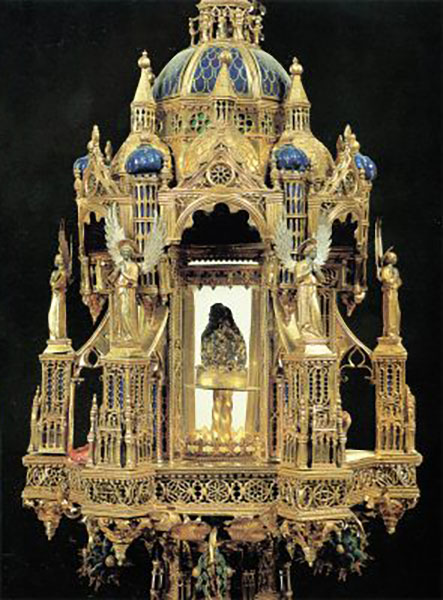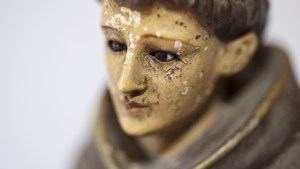Portuguese and Italians claim him as their own. Both sides are right. He was born in Lisbon as Fernando de Bulloes y Taveira de Azevedo, but assumed the name Anthony as a homage to St. Anthony the Abbot when he joined the Franciscans.
He died in Padua, and his remains are kept there, in a basilica dedicated to him. But whether Fernando or Anthony, Italian or Portuguese, St. Anthony of Padua is popularly known as il santo —no further info needed.
He is so popular that Pope Leo XIII referred to him as “everyone’s saint.” His devotees are spread all around the globe, and you would be hard pressed to find a chapel, church, basilica, or cathedral without an image of the Franciscan friar, holding the Infant Jesus in his arms.
The Basilica of St. Anthony of Padua was built right next to the old small church of Santa Maria Mater Domini, where he asked to be buried. As is often the case, the building grew considerably throughout the years. Successive additions were made to the original structure, making it quite difficult to specify whether the architecture is Romanesque, Gothic, or Baroque. In it, a gold reliquary retains the saint’s tongue and jaw —most precious relics, considering St. Anthony’s fame as an exceptional preacher.
Renowned for the depth and beauty of his preaching (tradition claims St. Francis of Assisi himself told him that his mission was, simply and straightforwardly, to preach), St. Anthony passed away of edema in 1231. He was canonized shortly after his death, and his body was exhumed 30 years later to be transferred to the basilica already built in his honor. While the body had completely decomposed, his tongue was found in perfectly good condition. Tradition claims it not only seemed to be alive but that it was shining with a supernatural glow.

This was considered visible, tangible proof of St. Anthony’s divine gift for preaching. The holy tongue was then separated from the other remains, alongside his jawbone and his left forearm. All these relics are permanently preserved in reliquaries for veneration within the basilica.
All sources agree: the tone of his voice, his captivating speech, the depth of his understanding of Scripture, and his ease in explaining the teachings of the Bible were so impressive that ecclesiastical authorities asked Anthony to preach the Gospel all across Italy and France. In fact, at the papal court of Gregory IX, his preaching was called the “jewel case of the Bible,” and the pope himself referred to him as the Doctor Acta Testamenti—the “ark of the Testament” itself.


